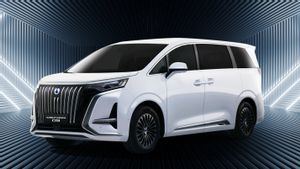Mach-E Mustang Incident Adds Autonomous Car Development Challenges

JAKARTA - Accidents involving autonomous features developed by a number of manufacturers have occurred quite a lot in recent years. Generally due to driver errors that are too confident in the feature or in other words ignore instructions when using it.
An accident involving this feature is now back where the driver of the Ford Mustang Mach-E in Pennsylvania, United States faces a number of charges after being involved in an accident that claimed the lives of two people in March. The electric vehicle was reportedly activating the driver assistance system without BlueCruise at the time of the unfortunate incident.
Launching Teslarati, September 7, the incident occurred in the early hours of the morning at Interstate 95 when Toyota Prius had a problem and stopped at the shoulder of the road. Another motorist, Tolobek Esenbekov, stopped to help, a Mach-E Mustang driven by tepat Patel crashed into the vehicle from behind. Both Baktybekov and Esenbekov were killed in the accident.
SEE ALSO:
According to the police, the Mach-E Mustang was traveling at a speed of about 112 km/h when it hit. In addition to the BlueCruise system, the Adaptive Cruise Control feature was also reported to be active at the time of the incident.
Patel is now facing nine counts, including the murder of driving under the influence of alcohol or drugs, accidental murder, and careless driving.
Ford has acknowledged the incident and stated that they are working with the authorities to conduct an investigation. Although BlueCruiseis not advertised as a fully autonomous system, Ford is promoting it as a "handless driving" solution for a predetermined path.
Pennsylvania police appealed to drivers to always be vigilant and avoid distraction while driving. They emphasize that autonomous vehicle technology should not be fully relied on, and drivers must always be ready to take control.


